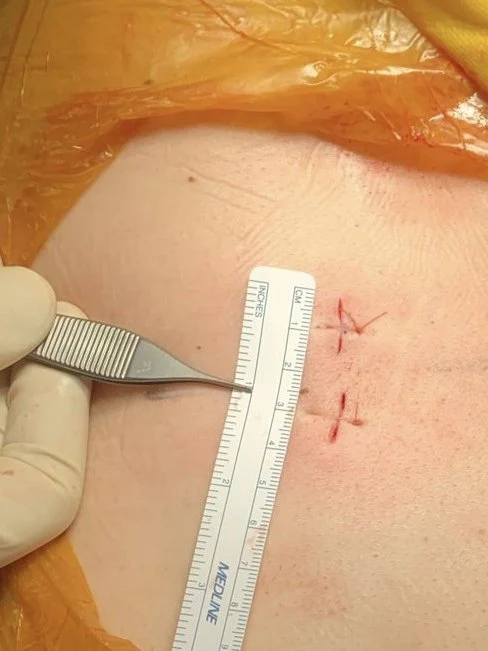A continuación descubrirás los 7 beneficios clave que están catapultando la MIS como el nuevo estándar de oro en cirugía de columna. Prepárate para entender por qué miles de pacientes ya exigen este enfoque de última generación.
1. Lightning-fast recovery: get back to work in record time
Thanks to minimal tissue trauma and 3D digital planning, more than 85% of our patients return to work in under 10 days, and many are discharged the same day of the procedure.
2. Minimal postoperative pain
By preserving the paraspinal musculature and avoiding extensive dissections, the need for opioid analgesics drops dramatically. Less pain means earlier mobilization, which in turn speeds overall recovery.
3. Nearly invisible scars
Incisions of 8 mm or less leave barely perceptible marks. This not only improves aesthetics but also lowers infection risk and promotes faster healing.
4. Reduced complication risk
Less tissue exposure means less intraoperative bleeding, lower infection rates, and minimized internal scarring that could impair long-term mobility.
5. Next-level technological precision
The combined use of 3D navigation, augmented reality, and robotic surgery delivers submillimetric accuracy and cuts pedicle screw placement errors by 43%. Every movement is guided and verified in real time.
6. Preservation of musculature and mobility
Avoiding muscle tearing and unnecessary fusions maintains the spine’s natural biomechanics. That translates into an almost intact range of motion and a smoother transition into physical therapy.
7. Durable, measurable results
With a 92% success rate in pain relief and under 1% reoperation at five years, the data show that MIS is not only fast and safe but also effective over the long term.
Real Testimonials
“After years of low back pain, I was able to run 5 km three weeks after surgery.” — María P. (Madrid)
“The experience was so quick that I was already walking around my hotel room that same afternoon.” — Javier G. (Barcelona)
“Robotic surgery gave me confidence and the results exceeded my expectations.” — Elena F. (Valencia)
Frequently Asked Questions (FAQ)
1. What conditions can be treated with minimally invasive surgery?
Herniated discs, spinal stenosis, spondylolisthesis, vertebral fractures, and mild deformities, among others.
2. How long does the procedure take?
Between 60 and 120 minutes, depending on the complexity of the pathology.
3. Will I need physical therapy?
Yes. We design a brief, personalized program that typically begins 48 hours after surgery to maximize recovery.
4. Is the surgery covered by health insurance?
Most private policies cover minimally invasive procedures. We assist you in reviewing your coverage.
5. Is there an age limit for this procedure?
There is no strict age limit; we assess your overall condition and any comorbidities to ensure safety.
